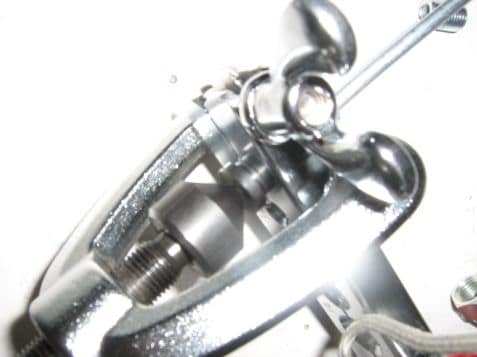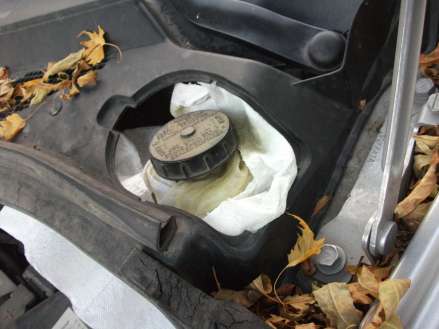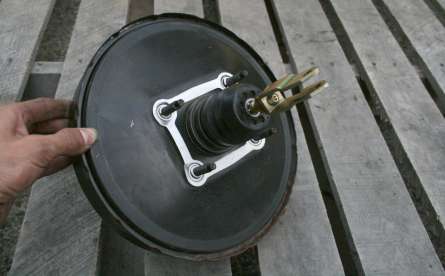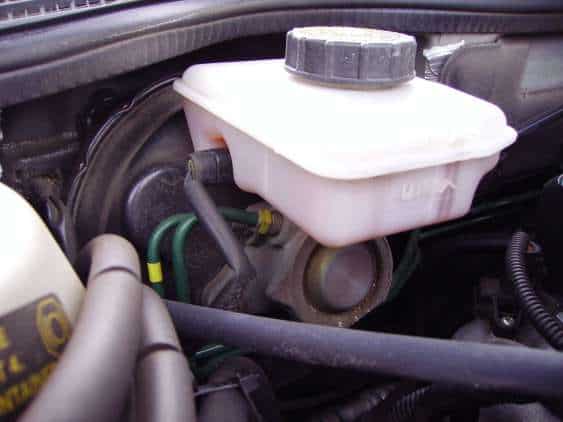Your car’s brake system makes sure that you can control and stop the vehicle promptly. Sometimes, after making certain repairs or changing the brake pads your brake pedal could become soft and spongy. So, when you push the pedal it goes down to the floor.
There are various reasons why your brake pedal goes to floor after changing pads. Some of the most common ones are brake lines not being bled, brake fluid leak, damaged brake booster, and faulty master cylinder.
Keep reading to understand more about these reasons and how to fix the problems underneath!
Table of Contents
Top 4 Reasons Why Your Brake Pedal Goes To Floor After Changing Pads
It will surely feel scary if your brake pedals go to the floor after changing pads. But, is it that bad? You need to fix this issue as soon as possible even if your car is running and stopping normally. Let’s discuss the most common reasons why the brake pedal goes to the floor after changing pads along with ways to fix them:
1. Brake Lines Have Not Bled
When you change pads and rotors, you need to roll the caliper inwards. This is to ensure that there is enough clearance for the new thicker brake pads to fit properly. It is much likely that you have air in the lines and the brake system. Air can enter the brake lines when you make repairs to the car. The brake fluid is what gets pushed through the brake lines to provide the proper force to stop your brakes. If air is inside the brake system, the brakes won’t receive the force required to stop them. Due to the same reason, the brake pedal can get pushed to the floor since there is no force.

It will take a little bit of usage of the brakes to allow the calipers to roll back out to allow a proper fit with the new pads. Keep in mind that the brakes are self-adjusting and will work fine after a few days of normal driving.
If your brake pedal sinks after changing the pads, you might need to bleed the brake lines. Here’s how:
- Start by bleeding the brake lines to force out any trapped air.
- If the problem persists, consider bleeding the ABS pump. You’ll need a tool like Vag-Com.
- This tool adjusts the pedal to VW specs, reducing downward travel.
Solution: Bleed the brake lines to push out the air out of the system. You can also bleed the ABS pump if bleeding the lines via the regular procedure doesn’t get rid of the problem. For this, you need a tool like Vag-Com. Using this tool you can set the pedal to the VW specs and make the pedal catch with not much downward travel.
2. Brake Fluid Leak
You could also get this problem if your brake system is low on brake fluid. If that’s the case, then it’s much likely that you have a leak in one of your brake lines. To check if you have a brake fluid leak or not, look underneath the car for puddles. Brake fluid’s color can range from yellow to brown, as per its age. It might also have a slick and oily texture, a lot like vegetable oil.

Detecting and fixing a brake fluid leak can be straightforward. Here’s what you need to do:
- Figure out where the leak is coming from.
- Begin by rebuilding the brake calipers (you’ll need a rebuild kit).
- Replace the defective wheel cylinder, along with steel brake lines and hoses. The master cylinder may also need replacing.
- Finally, bleed the air from your brake system.
Solution: You can easily fix a brake fluid leak on your own. First and foremost, you need to find the leak and start with rebuilding the brake calipers (for this you’ll need a rebuild kit), then replace the faulty wheel cylinder along with the steel brake lines and hoses. You might need to replace the master cylinder too. Lastly, just bleed air from your brake system.
Here’s a video tutorial to help you fix your car’s brake fluid leak:
3. Brake Booster Might Be Faulty
Another reason why your brake pedal might be going to the floor is that the brake booster has been damaged or is failing. This is a very common occurrence that happens due to wear over time. If you have a habit of slamming your brakes very often or find yourself in stop-and-go traffic, then you have a higher chance of facing this issue.

The brake booster is responsible for powering the entire brake system. It allows the brake fluid to engage with the brakes when you push the brake pedal. If the brake booster is not working properly, your brakes won’t engage when the pedal is pushed which results in a very soft pedal or a non-working one.
If your brake booster is defective, follow these steps for repair:
- Test the check valve by disconnecting it from the hose and blowing air through it. If air passes both ways, replace the check valve.
- Detach the master cylinder from the brake booster.
- Unfasten and remove the brake booster.
- Repair it according to the repair kit instructions or replace it if necessary.
Solution: To start repairing the brake booster, first, you need to test the check valve. Disconnect it from the hose and blow through it in both directions. If air passes in both directions, that means you have a bad check valve that needs replacement. Next, remove the master cylinder from the brake booster. Then, remove the fasteners of the brake booster, disconnect, and remove the brake booster. Repair it as per the instructions of the repair kit or you could replace it if the need arises.
4. Failing Master Cylinder
You might already know that with time and wear, your master cylinder is bound to fail. Now, this component is responsible for pumping the brake fluid in the brake lines. So, if the cylinder is failing, your lines won’t receive the required brake fluid. This means that there won’t be the requisite pressure and hence, the pedal goes down to the floor.

If the master cylinder is the issue, here’s what to do:
- Empty the brake fluid from the reservoir using a brake fluid removal tool.
- Use a line wrench to disconnect the brake lines and unbolt the master cylinder.
- Dismantle the master cylinder and identify the problematic component.
- Put the setup together, then bleed the brakes.
Solution: The brake master cylinder mostly malfunctions due to broken or worn out seals. Start the master cylinder repair procedure by emptying the brake fluid from the reservoir with a brake fluid removal tool. Next, use a line wrench to remove the brake lines and unbolt the master cylinder. Disassemble the master cylinder and check which component has problems. Lastly, assemble the setup and bleed the brakes.
Frequently Asked Questions
Why is my brake pedal too low after changing pads?
Your brake pedal might be too low after a pad change if there’s air trapped in the brake lines. Bleeding the brake lines can resolve this issue.
Why is my brake pedal going to the floor if it’s full of fluid?
Even if it’s full of fluid, your brake pedal can sink if there’s a leak in the brake lines or if the master cylinder is failing. It’s important to have this inspected immediately.
How many times do you need to pump the brakes after a pad change?
You should pump the brakes about 3 to 5 times or until the brake pedal feels firm after changing the brake pads.
Can brake pads be fitted wrong?
Yes, brake pads can be installed incorrectly. If installed backward or without the correct hardware, they can cause issues like reduced braking power or noisy brakes.
How long does it take for new brake pads to settle in?
New brake pads generally take around 250 to 350 miles to settle in completely. This process is known as “bedding in,” during which the pad material transfers a thin layer to the rotor surface.
Final Thoughts
If your brake pedals have been going down to the floor ever since you changed the brake pads, you need to inspect the brake system immediately. We all know how risky it can be if you drive your car with a malfunctioning brake system. There could be several underlying issues like a brake fluid leak, faulty master cylinder, etc. that need to be checked and repaired urgently. Also, make sure you bleed the brake lines after any repair with the brakes or the brake system.
